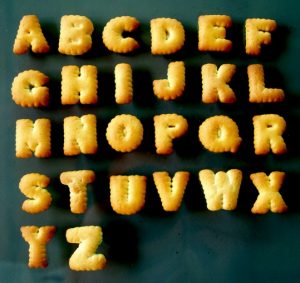How to Teach the Alphabet
The old “Alphabet Song” has proved to be a remarkable tool to assist learning the pronunciation and sequence of the English alphabet. The melody, written by Wolfgang Amadeus Mozart, has certainly stood the test of time. As the classic introduction to phonemic awareness, most beginning readers usually “catch on” to the concept that distinct sounds correspond to graphic representations known as letters. However, a small percentage of children does not grasp this relationship and so the children develop a shaky foundation for the alphabetic system. This poor foundation of “shaky sand” frequently washes away when the teacher attaches sounds to these alphabetic symbols.
Additionally, the alphabetic system can present problems for many English language-learners. Many of these students may have been very good readers in their primary languages. However, their written language may not have been based on the alphabetic system. For example, the Chinese connect vocabulary to symbols in a logographic system of writing, while Ethiopians use symbols for syllables. Thus, the alphabetic code may be quite different from the way some of your students began reading and writing.
With the following instructional adjustments, those who have never fully understood and those who have never learned the sound-letter connection will grasp this concept. First, do teach the “Alphabet Song.” The memorable connection between the visual letter representations and the letter names is enhanced with the melody.
One fault of the traditional “Alphabet Song” has been the common practice of slurring together the letter sounds in legato style. Because mastery of distinct letter names and letter sequence are the instructional goals, make sure to enunciate each letter and provide space between each letter as you lead the singing or rapping. Additionally, reading specialists recommend avoiding the “l-m-n-o-p” slurring syndrome by reassigning some of the letters to different parts of the melody. To demonstrate, the “Twinkle Twinkle, Little Star” song, which uses the same Mozart melody, has also been revised alongside the “New Alphabet Song.” Two video versions are provided: one for younger and another for older students.
Younger children will want to sing along with the video, but older students will be resistant. Encourage both ages of learners to say (chant) the letters if they won’t sing.
The New Alphabet Song
Twinkle twinkle, little star,
a b c d e f g
How I wonder what you are.
h i j k l m n
Up above
o p q
Earth so high,
r s t
shining bright
u v w
in the sky.
x y z
*****
The New Alphabet Song Videos
Pre-K through Grade 3
Grade 4 through Adult
*****
The Science of Reading Intervention Program
The Science of Reading Intervention Program: Word Recognition includes explicit, scripted instruction and practice with the 5 Daily Google Slide Activities every reading intervention student needs: 1. Phonemic Awareness and Morphology 2. Blending, Segmenting, and Spelling 3. Sounds and Spellings (including handwriting) 4. Heart Words Practice 5. Sam and Friends Phonics Books (decodables). Plus, digital and printable sound wall cards and speech articulation songs. Print versions are available for all activities. First Half of the Year Program (55 minutes-per-day, 18 weeks)
The Science of Reading Intervention Program: Language Comprehension resources are designed for students who have completed the word recognition program or have demonstrated basic mastery of the alphabetic code and can read with some degree of fluency. The program features the 5 Weekly Language Comprehension Activities: 1. Background Knowledge Mentor Texts 2. Academic Language, Greek and Latin Morphology, Figures of Speech, Connotations, Multiple Meaning Words 3. Syntax in Reading 4. Reading Comprehension Strategies 5. Literacy Knowledge (Narrative and Expository). Second Half of the Year Program (30 minutes-per-day, 18 weeks)
The Science of Reading Intervention Program: Assessment-based Instruction provides diagnostically-based “second chance” instructional resources. The program includes 13 comprehensive assessments and matching instructional resources to fill in the yet-to-be-mastered gaps in phonemic awareness, alphabetic awareness, phonics, fluency (with YouTube modeled readings), Heart Words and Phonics Games, spelling patterns, grammar, usage, and mechanics, syllabication and morphology, executive function shills. Second Half of the Year Program (25 minutes-per-day, 18 weeks)
The Science of Reading Intervention Program BUNDLE includes all 3 program components for the comprehensive, state-of-the-art (and science) grades 4-adult full-year program. Scripted, easy-to-teach, no prep, no need for time-consuming (albeit valuable) LETRS training or O-G certification… Learn as you teach and get results NOW for your students. Print to speech with plenty of speech to print instructional components.
SCIENCE OF READING INTERVENTION PROGRAM RESOURCES HERE for detailed product description and sample lessons.
Get the SCRIP Comprehension Strategies FREE Resource:
![]()
Get the Diagnostic ELA and Reading Assessments FREE Resource:![]()
Get the Syllable Awareness Assessment FREE Resource:
![]()
Get the Syllable Rules FREE Resource:
![]()
Get the Accent Rules FREE Resource:
![]()
Get the Alphabet Assessment, Matrix, Activity, and Game Cards FREE Resource:
![]()

